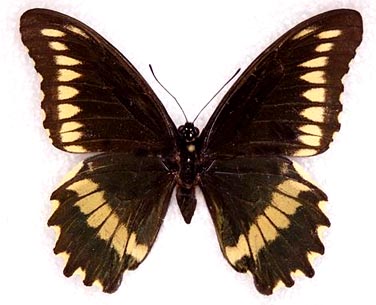
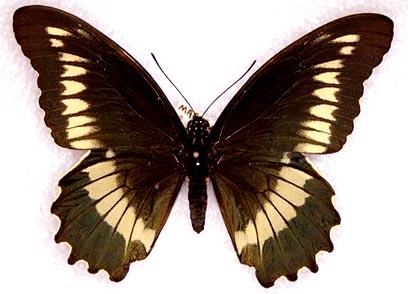
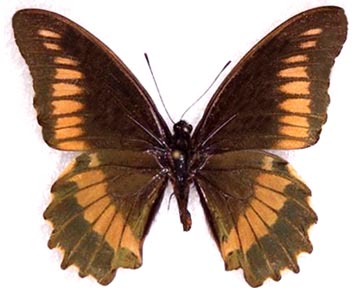
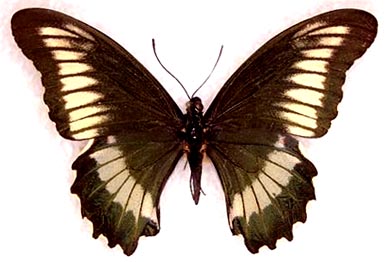
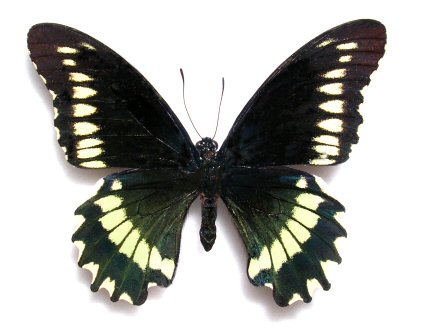
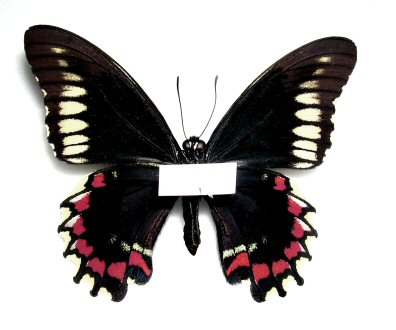
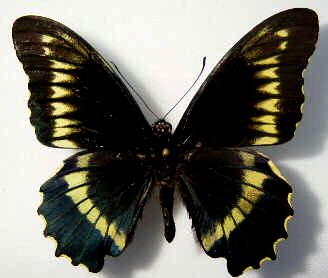
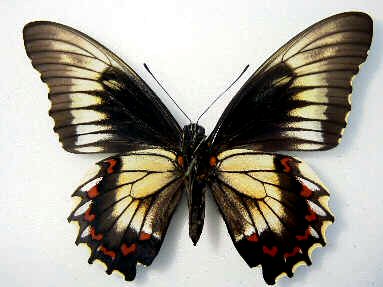
| Blue Mountains, Jamaica; August 1977 ssp. jamaicensis | Guadeloupe, May 1980 ssp. neodamas |
| Gallows Bay, St Croix, USVI Feb 2000 ssp thyamus | Gallows Bay, St Croix, USVI Feb 2000 verso |
 |
 |
| Ranacca Dry River, 1km N of Georgetown, Charlotte Parish, St Vincent ssp vincentus | 3km SW of La Francoise, Martinique March 1992 ssp. xenodamas female |
 |
 |
| 3km SW of La Francoise, Martinique Sept 27 1992 ssp xenodamas bronze morph (rare) | "St Lucia" Jan 1930 ssp lucianus |
 |
 |
| SW Grenada Jan 20 2001 ssp grenadensis | SW Grenada Jan 20 2001 ssp grenadensis underside |
| El Manzano, Chile; 11/95 ssp. archidamus | |
| Bagua Grande, Nororiental d. Maranon, Peru, 1400 meters ssp streckerianus pair male top, female bottom | Bagua Grande, Nororiental d. Maranon, Peru, 1400 meters ssp streckerianus underside male |
 |
 |
| Rio Urubamba, Peru ssp weyrauchi male | Rio Urubamba, Peru ssp weyrauchi female verso |
Common and widespread from the US south to Argentina.
Very distinct forms are found in isolated and rare populations in the Andean
deserts, some of which may deserve to be ranked as separate species. Different
subspecies occur on many islands of the Caribbean as well ( forms from
Jamaica, St Croix, Guadeloupe, Martinique, St Vincent, and St Lucia
are shown). Also shown is the Chilean ssp archidamus (psittacus),
often regarded as a distinct species. Below is the rare and very restricted
form streckerianus from the Peruvean Andes (Rio Maranon 1400 meters),
which is still considered by many to be a distinct species. Also illustrated
is the subspecies weyrauchi (attributed to either polydamas
or streckerianus depending on your preference)from the Cuzco area
of Peru. Although technically in the "streckerianus group" it is
clearly closer phenotypically (and geographically) to archidamas,
furthur supporting the concept of a single wide ranging species or "super-species"
(polydamas) which can diversify and specialize when populations
become geographically isolated (this very clearly happens throughout
the Carribean) as they have in the valleys of the Peruvian andes. I would
not be surprised if new forms turn up in semi arid biotopes of Ecuador
and Colombia, though these areas need further exploration.